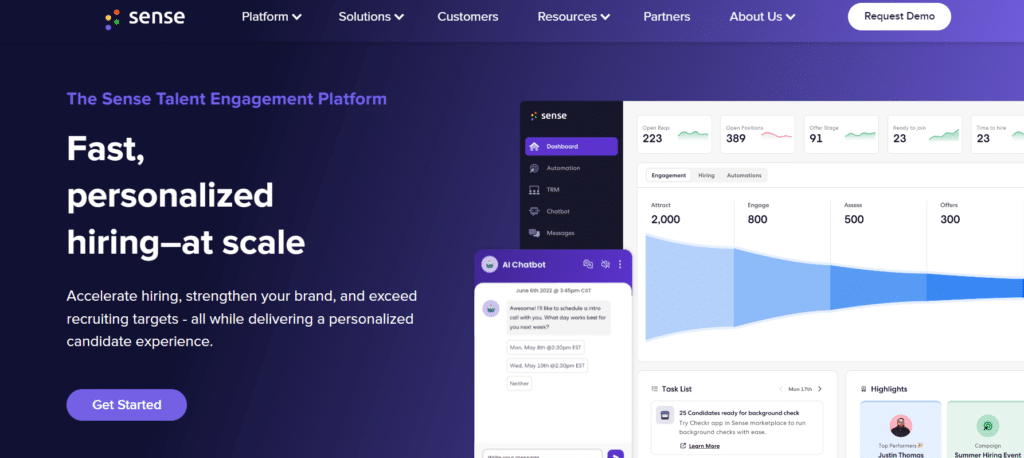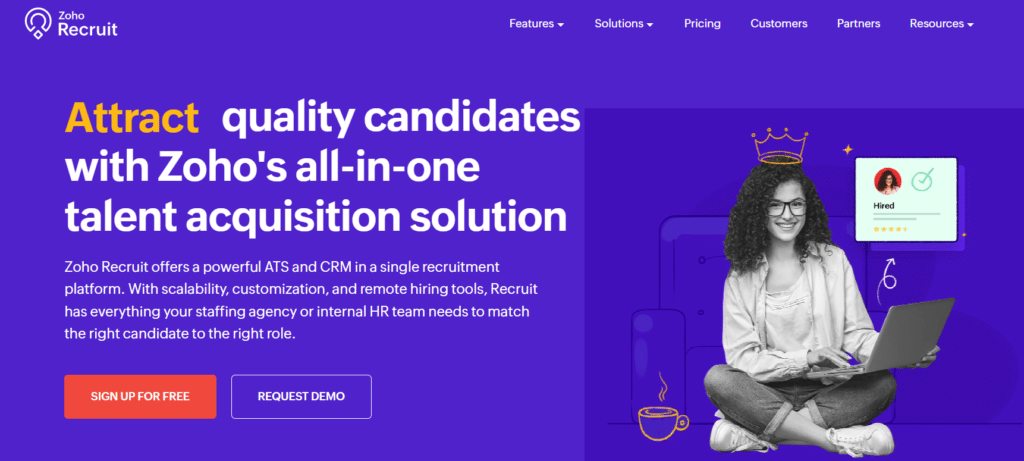In today’s fast-paced and competitive job market, finding the right talent can be a daunting task for recruiters and HR professionals. The process of attracting, screening, and hiring candidates requires efficient tools that can streamline these operations, saving valuable time and resources. This is where staffing tools come to the rescue! Staffing tools, such as Applicant Tracking Systems (ATS) and AI-powered recruitment platforms, have revolutionized the hiring process, making it easier for organizations to identify the best candidates and build high-performing teams.
In this blog, we will explore the top 5 staffing tools that have gained immense popularity and recognition in the HR industry. Each tool offers a unique set of features designed to enhance the recruitment process, improve candidate engagement, and elevate overall hiring efficiency. Whether you are an enterprise-level company or a growing startup, these tools have the potential to transform the way you attract and hire talent. Let’s dive into the world of cutting-edge staffing solutions and discover the power they hold in revolutionizing your recruitment strategy.
Top 5 Staffing tools
1. Ceipal ATS

Ceipal ATS is a comprehensive staffing tool designed to streamline the recruitment process for businesses and staffing agencies. It offers a user-friendly interface and a wide range of features that help recruiters efficiently manage job postings, track applicants, and collaborate with hiring teams.
Features:
- Job Posting
- Candidate Tracking
- Talent Pool Management
- Interview Management
- Reporting and Analytics
Cost:
The pricing for this tool starts from $24 per month.
2. Sense

Sense is an AI-powered recruiting automation platform designed to engage and nurture candidates throughout the hiring process. It uses AI and machine learning to automate communication with candidates, providing a personalized experience and improving the overall efficiency of the recruitment process.
Features:
- Automated Candidate Communication
- Candidate Relationship Management
- Multi-channel Communication
- Behavioral Insights
- Time-saving Workflows
Cost:
You can request a quote from their website.
3. Zoho Recruit

Zoho Recruit is a cloud-based applicant tracking system designed for small to medium-sized businesses and recruitment agencies. It offers a range of features to streamline the hiring process and make it more efficient for recruiters.
Features:
- Customizable Career Website
- Resume Parsing
- Interview Management
- Workflow Automation
- Reports and Analytics
Cost:
The pricing for this tool starts from ₹1,250.
4. JobDiva

JobDiva is a cloud-based talent acquisition and applicant tracking system suitable for businesses of all sizes. It is designed to streamline the hiring process, from candidate sourcing to onboarding, while providing powerful analytics and reporting capabilities.
Features:
- Candidate Sourcing
- Candidate Matching
- Vendor Management
- Interview Collaboration
- Timesheet and Expense Management
Cost:
You can request a quote from their website.
5. 100hires

100hires is a modern applicant tracking system designed to simplify and optimize the recruitment process for businesses and organizations. It offers a range of features to attract, engage, and hire top talent effectively.
Features:
- Job Posting and Syndication
- Automated Resume Screening
- Interview Management
- Offer Management
- Analytics and Insights
Cost:
The pricing for this tool starts from $29 per month.
Benefits of using staffing tools
Using staffing tools, such as Applicant Tracking Systems (ATS) and AI-powered recruitment platforms, offers numerous benefits that can significantly improve the efficiency and effectiveness of the hiring process. Here are some of the key advantages of using staffing tools:
Time and Cost Savings: Staffing tools automate various time-consuming tasks, such as resume screening, candidate sourcing, and interview scheduling. This automation reduces the manual effort required from recruiters, freeing up their time to focus on strategic aspects of the recruitment process. Additionally, by streamlining the hiring process, these tools help organizations save on recruitment costs and reduce time-to-hire, ensuring vacant positions are filled promptly.
Improved Candidate Quality: Staffing tools use advanced algorithms and AI-driven analytics to identify the most relevant and qualified candidates for a given role. By using data-driven insights, recruiters can make more informed decisions, resulting in a higher quality of hires. This leads to a more skilled and productive workforce, contributing to the organization’s success in the long run.
Enhanced Candidate Experience: Providing a positive candidate experience is crucial in today’s competitive job market. Staffing tools facilitate seamless communication with candidates, keeping them engaged throughout the hiring process. Automated updates, personalized messages, and timely feedback leave candidates with a favorable impression of the company, regardless of the final hiring decision.
Things to consider while buying a staffing tool
When purchasing a staffing tool, it’s essential to consider several key factors to ensure that the tool aligns with your organization’s needs and maximizes the efficiency of your recruitment process. Here are the important things to consider while buying a staffing tool:
Scalability and Flexibility: Evaluate whether the staffing tool can accommodate the growth of your organization. Ensure that it can handle increased candidate volumes and support multiple users if needed. Additionally, look for a tool that offers flexibility, allowing you to customize workflows and adapt to changing recruitment needs.
User-Friendly Interface: A user-friendly interface is crucial to ensure that your team can quickly adopt and effectively utilize the staffing tool. Consider a tool with an intuitive design and easy navigation to minimize training time and maximize productivity.
Feature Set: Identify the specific features that are essential for your recruitment process. Some common features include candidate sourcing, resume parsing, interview scheduling, automated communications, and analytics. Choose a tool that offers the features that align with your organization’s hiring requirements.
Conclusion
As the landscape of HR technology continues to evolve, staying up-to-date with the latest advancements and trends becomes paramount for staying ahead in the competition. Remember that the ideal staffing tool for your organization will depend on your specific needs, team size, and budget. Be sure to thoroughly evaluate each tool’s features and pricing to find the perfect fit for your recruitment strategy.
By harnessing the power of these top-notch staffing tools, you can build a talent acquisition process that not only attracts the best candidates but also nurtures meaningful relationships with them. Investing in the right staffing tool is an investment in the future success of your organization, as it paves the way for building a highly skilled and motivated workforce that drives growth and innovation.








